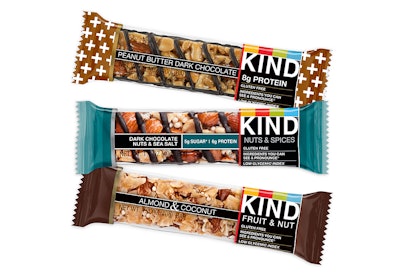Of the $50 billion that Mars collected in revenue in 2023, $18 billion of that came from sales in its snacking division—including candies like Snickers and M&Ms, its Extra and Wrigley chewing gum brands, and Kind nutrition bars. With an inside look at its strategy, Mars recently told Forbes its plans to double its snacking revenue to $36 billion within the next decade.
There’s no question that the snack sector has been all the rage lately, with Gen Z and Millennials, in particular, often opting for snacks over meals. But it’s also clear that those and other generations are much more aware of the need for healthier options—especially as the COVID-19 pandemic made it clear the benefits of taking better care of your overall wellbeing.
Mars wants to transform the snacking industry, Andrew Clarke, global president of Mars Snacking, told Forbes. To do that, the company needs to be mindful of the trend toward U.S. consumers cutting back on sweets.
Mars and its competitors are keeping a close eye on the effects of Ozempic and other appetite-suppressing weight loss drugs and how they could alter consumer buying habits. Sales have skyrocketed for Ozempic, up 58% in the first nine months of 2023. It’s estimated that up to 1.7% of the population has been prescribed a drug containing semaglutide (the active ingredient in Ozempic); that could reach 7% of the U.S. population over the next 10 years, according to predictions from Morgan Stanley. so far this year. That means some 24 million people possibly consuming 20% fewer calories.
If Mars is going to double its snacking revenue in the next 10 years, it will certainly have its work cut out for it, according to Robert Boutin, president of candy consultancy Knechtel. “Almost everybody is on a diet. Almost everybody watches calories. Everybody is worried about heart disease, obesity and diabetes. Most parents restrict how much sugar children are taking,” Boutin told Forbes. “That has an impact on their core business.”
With a renewed focus on snacking, Mars is reaching into its deep pockets and is on the lookout for forward-thinking brands to snatch up. “We want to become the home for entrepreneur and insurgent brands,” Clarke told Forbes. “The reason that the founders and entrepreneurs are very keen to partner and work with Mars as a differentiator is our long-term view to start with. We have an ability to really protect and respect and build those brands for the long run.”
A key part of Mars’ growth strategy is built on global expansion, Forbes explained, with a particular focus on healthier options. Dove’s sugar-free products are doing especially well in China, for example, where 80% of the buyers are new to Mars products. And Kind bars—which have succeeded in grocery stores across the U.S. largely because of their perception of healthier snacking—are now being distributed in 30 markets outside the U.S. and Canada, including debuts this year in South Korea and Malaysia.
The further reach will make a focus on supply chain and sustainability that much more important for a company wanting to make sure its consumers see it as a responsible steward. Mars has goals to deliver cuts of 50% in emissions by 2030, reaching net-zero carbon by 2050.























